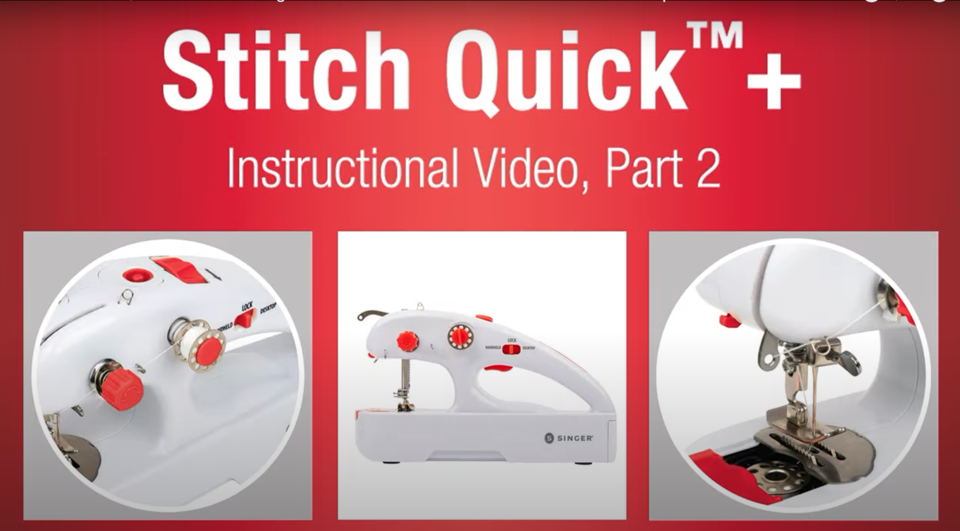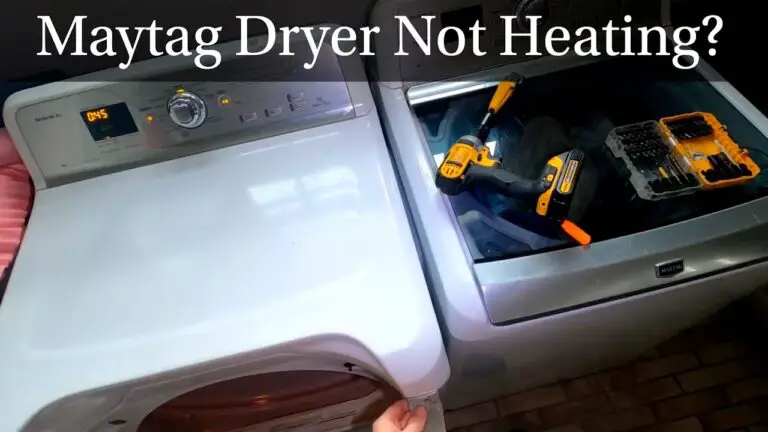Singer Stitch Quick Troubleshooting: Quick Fix Guide
Have you ever been in the middle of a sewing project only to find your Singer Stitch Quick acting up? Frustrating, isn’t it?
You’re not alone, and the good news is that you can often fix these issues quickly and easily. In this guide, we’ll walk you through some simple troubleshooting steps to get your Singer Stitch Quick back to work in no time.
Whether it’s tangled threads or a stubborn needle, we’ll help you understand and solve the problem. Let’s ensure your sewing projects never miss a stitch again. Keep reading to discover how you can save time and reduce stress with your Singer Stitch Quick!

Credit: www.walmart.com
Common Issues
Singer Stitch Quick often faces tension issues or thread jams. Uneven stitches can occur due to improper needle placement. Checking settings and threading helps ensure smooth operation.
When you’re using your Singer Stitch Quick, it’s all smooth sailing until suddenly it’s not. Machines, much like us, can have their off days. Understanding the common issues that could arise can save you time and frustration. Let’s dive into some frequent hiccups you might encounter and how to address them efficiently. Remember, every sewing machine, just like each sewing project, has its unique quirks.1. Thread Jamming
Thread jamming is a common headache, especially if you’re in the middle of a creative flow. It often happens due to incorrect threading or tension settings. To fix this, re-thread your machine, ensuring the thread is passing through all the necessary guides. Check your tension settings and adjust them to a moderate level. Do you remember the last time you were in a rush and skipped the threading guide? Ensure every step is followed, no matter how familiar it seems.2. Needle Breaking
A needle that breaks unexpectedly can halt your sewing project abruptly. This issue might be due to using the wrong needle size or type for your fabric. Always match your needle to your material. A thick fabric like denim needs a sturdy needle, whereas delicate fabrics need a lighter one. Have you ever tried sewing with a dull needle? It’s like cutting steak with a butter knife—frustrating and ineffective.3. Skipped Stitches
Skipped stitches can make your seams weak and your project less durable. This can occur if the needle is bent or the tension is off. Check your needle for bends and replace it if necessary. Adjust the tension settings, and run a test on a scrap fabric. Think back to when you tried sewing too fast—sometimes slowing down can help maintain even stitching.4. Machine Not Running
If your machine refuses to run, it might be an electrical issue or a simple oversight like a disconnected power cord. Ensure the machine is plugged in and turned on. Check the foot pedal connection as well. Ever panic over a seemingly dead machine only to realize it was unplugged? It’s a simple fix often overlooked in the heat of creativity.5. Uneven Stitches
Uneven stitches can ruin the look of a perfectly crafted piece. This often results from improper tension or incorrect fabric feeding. Adjust the tension and ensure the fabric is feeding smoothly under the presser foot. Use both hands to guide the fabric gently. Have you noticed the difference a clean work area makes? Sometimes, clutter can affect how you manage your fabric flow. Understanding these common issues can help maintain your sewing rhythm and turn potential obstacles into minor bumps in your creative journey. What challenges have you faced with your Singer Stitch Quick, and how did you overcome them? Engage with these solutions and keep your projects on track.Threading Problems
Experiencing threading problems with the Singer Stitch Quick can be frustrating. Ensure the needle is correctly inserted and not bent. Check the bobbin and upper thread for proper tension and alignment to avoid skipped stitches.
Threading problems with your Singer Stitch Quick can be frustrating, but fear not! With a few simple adjustments, you can often resolve these issues. Whether you’re new to sewing or a seasoned pro, threading problems can happen to anyone. Let’s dive into some common issues and solutions to get your machine back up and running smoothly.Incorrect Threading
Incorrect threading can lead to skipped stitches or a machine that simply won’t sew. Make sure the thread follows the correct path. Check if the thread is properly seated in the tension discs and threaded through the needle eye. A common mistake is forgetting to raise the needle to its highest position before threading. This ensures the thread seats properly. Always refer to your Singer Stitch Quick manual for guidance. If you’re unsure, watch a tutorial online for a visual guide. Troubleshooting often involves retracing your steps. Take a deep breath and slowly rethread your machine. It’s surprising how often this simple act solves the issue.Tangled Thread
Tangled thread can be a nightmare, causing bunching or even damage to your fabric. Check if the thread spool is spinning freely. A snag here can lead to tension problems. Consider the quality of your thread. Low-quality thread often leads to tangling. Opt for high-quality brands for a smoother sewing experience. It’s an investment in frustration-free stitching. If tangling persists, inspect the bobbin. Ensure it’s inserted correctly and the thread is wound evenly. A poorly wound bobbin can disrupt the entire sewing process. Have you ever felt like you’re wrestling with your sewing machine instead of working with it? Tangling threads can test your patience. But remember, each challenge is an opportunity to learn and improve your skills. Are there any other tips you’ve found helpful when tackling threading problems? Share your insights in the comments below!Tension Adjustments
The Singer Stitch Quick is a handy tool for quick sewing tasks. Proper tension adjustment ensures smooth stitching and prevents thread issues. Understanding tension settings can enhance your sewing experience.
Identifying Tension Issues
Check the thread for loops or tightness. Loops mean tension is too loose. Tight thread indicates high tension. Examine the fabric for puckering. Puckering suggests incorrect tension. Listen to the machine’s sound. Unusual noise can signal tension problems.
Adjusting Tension Settings
Find the tension dial on your Singer Stitch Quick. Turn it clockwise for tighter tension. Move it counterclockwise to loosen tension. Test on scrap fabric after adjusting. Check for smooth stitches. Repeat adjustments until stitches look balanced. Take note of the settings that work best.

Credit: www.youtube.com
Needle Concerns
Troubleshooting needle issues with the Singer Stitch Quick involves checking needle size and alignment. Ensure the needle is not bent or broken. Verify proper threading to prevent skipped stitches and jamming.
When using the Singer Stitch Quick, needle concerns can often arise, hindering your sewing project. Understanding these issues can save time and frustration. Let’s dive into some common needle-related problems and their solutions.Bent Or Broken Needles
Bent or broken needles are a common hiccup. They often result from sewing through thick materials or hitting a hard object. Always keep spare needles handy. Regularly check the needle for any signs of damage. Gently run your finger along the needle to feel for bends. If you find a bend or break, replace it immediately. Avoid pushing the fabric too hard or fast. This can cause the needle to bend. Instead, let the machine feed the fabric naturally.Needle Compatibility
Using the right needle is crucial for seamless sewing. Different fabrics require different needles. Make sure to match the needle type with your fabric. Check your manual for needle recommendations. This ensures you’re using compatible needles with the Singer Stitch Quick. The wrong needle can lead to skipped stitches or fabric damage. Experiment with needle types to see what works best. If a needle doesn’t perform well with your fabric, try another. Small changes can make a big difference in your sewing results. Have you ever struggled with needle issues on your Singer Stitch Quick? Share your experience in the comments.Power Supply Issues
Experiencing power supply issues with your Singer Stitch Quick can be frustrating. These problems often disrupt your sewing projects. Understanding potential power issues helps resolve them quickly. Let’s explore common power supply problems.
Checking Battery Life
First, examine the battery life. Your Singer Stitch Quick might not start. This could be due to drained batteries. Replace old batteries with new ones. Ensure they’re installed correctly. Incorrect installation can hinder power flow. Always use recommended battery types. This ensures optimal performance.
Power Cord Troubles
Next, inspect the power cord. Check for visible damage. Frayed or broken cords can interrupt power. Replace damaged cords immediately. Confirm it’s plugged into a working outlet. A loose connection can cause issues. Sometimes, outlets may have problems. Test the device with another outlet. This helps identify outlet issues.
Stitch Quality Problems
Singer Stitch Quick troubleshooting helps identify stitch quality problems quickly and efficiently. Common issues include uneven stitches and thread tension problems. Simple adjustments can often resolve these issues, ensuring a smooth sewing experience.
Stitch quality problems can be frustrating, especially when you’re eager to finish your sewing project. Have you ever found yourself staring at uneven stitches or wondering why some stitches just vanish? These issues can turn a fun sewing session into a challenging puzzle. Let’s dive into the common problems of skipped and uneven stitches, and discover how to fix them with ease.Skipped Stitches
Skipped stitches can be a real headache. Imagine sewing along smoothly, only to notice gaps in your stitching line. This often happens due to a dull needle or incorrect needle size. Always check that your needle is sharp and suitable for your fabric. Another reason could be improper threading. Ensure your machine is threaded correctly, as even a minor mistake can lead to skipped stitches. Are you using the right thread tension? Adjusting the tension might solve the problem. Sometimes, a slight tweak is all it takes to get consistent, beautiful stitches.Uneven Stitches
Uneven stitches can make your work look amateurish, even if you’re a seasoned sewer. It’s often a result of inconsistent fabric feeding. Make sure the fabric feeds smoothly under the presser foot. Consider using a walking foot, especially when working with thick or layered fabrics. It helps in maintaining consistent stitch length. Have you checked your machine settings? Speed and stitch length settings can affect stitch uniformity. Slow down and adjust the stitch length to suit your fabric type. Have you faced stitch quality issues before? How did you tackle them? Share your experiences and tips in the comments, and let’s learn from each other’s sewing adventures!Maintenance Tips
Keep your Singer Stitch Quick running smoothly with simple troubleshooting tips. Ensure threads are correctly placed and tension is adjusted. Regularly clean the machine to prevent jams and maintain performance.
Maintaining your Singer Stitch Quick is essential for smooth sewing sessions and extended machine life. Proper care can prevent unexpected breakdowns and ensure your projects are completed without a hitch. Let’s dive into some maintenance tips that can keep your machine running efficiently.Cleaning The Machine
Dust and lint can quickly accumulate in your Singer Stitch Quick, affecting its performance. Use a small brush or compressed air to clean around the needle and bobbin area. A simple wipe down with a soft cloth on the exterior can also keep your machine looking new. Have you ever noticed stitches skipping? It might be a sign that your machine needs a thorough cleaning.Regular Lubrication
Lubrication is key to keeping your machine’s parts moving smoothly. Apply a few drops of sewing machine oil to the designated areas as per your manual. This practice not only reduces friction but also minimizes wear and tear. Have you ever heard your machine make a strange noise? It might be time for a little oiling. How often do you check your machine’s lubrication status? Regular checks can save you time and money in repairs.When To Seek Professional Help
Experiencing issues with Singer Stitch Quick can be frustrating. Seek professional help when basic troubleshooting fails or persistent mechanical problems arise. Expert guidance ensures your sewing tasks are completed efficiently and effectively.
When dealing with a malfunctioning Singer Stitch Quick, sometimes DIY fixes won’t work. Knowing when to seek professional help is essential. This can prevent further damage to your sewing tool. It also ensures your projects continue smoothly. A professional can offer the expertise needed to resolve complex issues.Identifying Major Issues
Some problems require more than a simple fix. If your Singer Stitch Quick makes strange noises, it could be a sign of a bigger issue. Frequent thread jams can indicate internal problems. Difficulty in maintaining stitch quality is another red flag. If the device fails to power on, professional help is crucial. These issues might need specialized tools and skills. Trying to fix them without expertise can cause more harm.Finding A Reliable Technician
Finding the right technician for your Singer Stitch Quick is vital. Start by asking for recommendations from friends or sewing communities. Look for certified repair services with good reviews. Ensure the technician has experience with Singer products. Verify their credentials and ask about their repair policies. A reliable technician will offer a warranty for their services. This guarantees peace of mind and quality repairs.
Credit: www.facebook.com
Conclusion
Facing issues with your Singer Stitch Quick? You’re not alone. Troubleshooting can seem daunting. But with patience, solutions are within reach. Check connections. Ensure fabric alignment. Keep the device clean. These simple steps often solve common problems. If issues persist, consult the manual.
Or seek professional help. Remember, practice makes perfect. Sewing should be enjoyable, not stressful. A little care goes a long way. Happy sewing!






